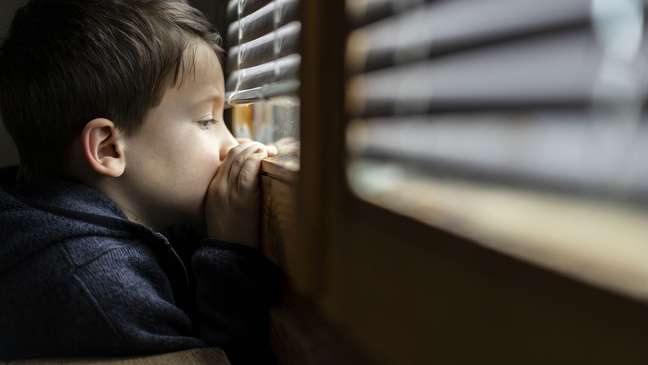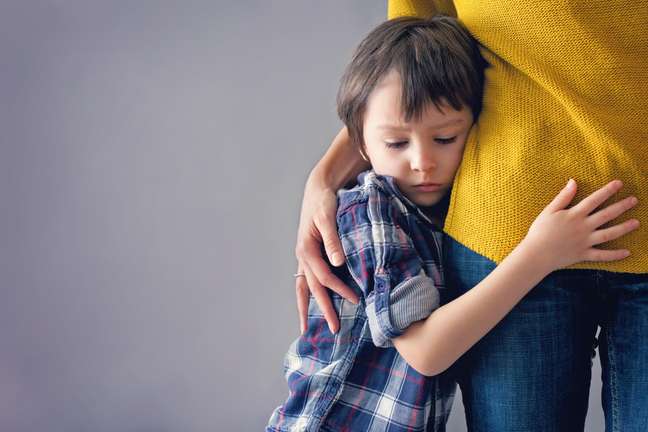Comments like this make them learn to overreact, seeing danger where there is none. Find out how to balance the problem
War, famine, robberies, murders, kidnappings. When you watch news, the sensation it gives is that of an almost paralyzing fear. Depending on how you absorb it, there comes the certainty that the world is a terrible place, full of dangers and that humanity has really been wrong. When you have children, fear multiplies: how to protect children from so many bad situations? An alternative could be the relentless warning of all risks. But exaggerating the negative view of where we live can hurt them more than it helps. This is shown by a recent study from the University of Pennsylvania, published in The Journal of Psychology.

This is explained by the American psychologist Jeremy Clifton, author of the work most parents believe that teaching children that the world is a bad place is better for them. This, however, is not true. According to the research, evidence shows that the Negative beliefs have almost never been associated with better educational outcomes. “Conversely, people who were educated with that kind of vision had less success, less job and life satisfaction, worse health outcomes, more negative emotions, more depression and even more suicide attempts,” Clifton says in a scientific article.
“The so-called primary beliefs are beliefs about the most basic and psychologically important characteristics of the world, such as how dangerous it is, how fun it is, how stable it is and so on,” explains the expert. Through reviews and comparisons with previous research, medical literature and empirical studies, the psychologist and his team found that most parents pass on primary beliefs to their children, such as that the world is dangerous and that it is against. of them. According to Clifton, this is a bad idea, as this type of education has been associated with a number of negative outcomes later in life. “Previous studies have shown that people who tend to see the world as a dangerous place overreact to situations and see threats where they don’t exist.”He says.
But isn’t the world dangerous?
According to research, teaching children that we live in a dangerous place can be harmful to them. But what to do in the face of threats that seem increasingly intense and numerous? Returning to the example of the news: it is necessary to remember that the series of reports that are broadcast on television every day (in a more or less sensationalistic tone, depending on the type of news) is only a clipping of reality. The whole thing is actually much more complex. This means that we must pay attention to the fact that not only bad things happen. At the same time as a thief attacks a lady at the bank door, there are several people who visit abandoned elderly people in nursing homes, who help someone cross the street, who volunteer in some institution, who adopt abandoned dogs … So yes, the world can have dangerous aspects, but that’s not all it’s made of.
“There is a cultural belief that the world is a bad place and that we need to prepare children for this place,” says psychologist Nanda Perim, creator of the PsiMama method and author of the book. Educate without going crazy (bestselling publisher). “All the dangers that exist, coupled with the fact that parents have a great fear of losing their children, make them believe that leaving the child afraid of the world will help them protect themselves better and be safer,” she explains. he. . Intention, at least most of the time, is the best. “All these teachings come from a place of love, care, protection, desire for happiness”, says the specialist.
Also, the trend is for people to pass on what they were also taught at the time. “We are generations and generations of adults who, one day, were children who felt that the world is a dangerous place. We also grew up with these fears,” she stresses.
Other reasons could be behind the panic transmitted to children. “Dangers, threats and problems will exist and impact each of us in different ways, depending on our life history, yes, but also on the social indicators we carry with us”underlines the psychoanalyst and psycho-pedagogue Thais Basile, from the Instagram profile @educacaoparapaz. “A woman is traversed by fear, the feeling of dread and the feeling of not being heard or considered (which makes this feeling of fear worse, because it adds loneliness) much more than a man, for example. Is traversed by masculinity in a different way, compared to whites, “he points out. In other words, for her, it’s not just our personal life story and childhood that tells us how we cope with our fears, but the combination of several complex factors.
interrupting the cycle
It is necessary to stop transmitting the fear and terror of the world to children, as the study cited at the beginning of this article shows, but the mission is far from simple. This is because, as this feeling is instilled in adults, for different reasons, it takes a lot of effort to break a chain built several generations ago. “Education is much more about what we hear, think and do than what we are saying to the child. Words disappear in the wind if we have not internalized it within us,” says Thais. This means that it is useless to try to show that the planet is beautiful and wonderful and that it has many positive points, if we do not believe it ourselves.
And herein lies the challenge! To change the beliefs we transmit to the little ones, it is necessary, first of all, to look at ourselves and face our problems. “In childhood, defense mechanisms are learned: escape, avoid, compensate for fear or, then, use healthy defense mechanisms, which is talking about it, being supported, listening, holding, welcoming. Option”, says the psychologist and psychologist of the ‘education .
“Today we know from neuroscience about the plasticity of the brain, its ability to rebuild itself. it is possible to reprogram these beliefs, but it is a complex job“, warns Nanda Perim. If you don’t try to see your problems, the reasons why you always feel threatened and in danger, and don’t reschedule this or, at least, try to see that there is another side, with positive characteristics, it will be impossible to show children anything different.
There is no shortcut and this is also Jeremy Clifton’s conclusion. “My advice to anyone interested in core beliefs and how they can affect your life or that of your children is to first find out what your beliefs are. The first step to getting out of prison is to recognize that you are inside. prison “, guide.

In practice: what to do?
In addition to looking at and facing your problems, taking care of yourself and the vision you have built on the world, on a daily basis, it is necessary to exercise ways of educating without engaging in terrorism.
Welcoming is one of the most effective ways to deal with fears, as you cannot hide what is bad. “The child is not immune to the world, he is seeing all of this. He just doesn’t know how to name things many times. It is important for parents to welcome and help to name, especially when the problem comes from the child,” explains Thais.
If your child sees something negative happening (in a news story or adult conversation, for example) and raises this request, showing that it impacted and worried him, parents should not deny the facts and paint. the world in pink color. The ideal is to explain, in a simple and age-appropriate way, what is happening and that there are people working to solve it.
“What we should not do is flood the child with the problems of the world without his interest and without the perception that he is already open to the possibility of hearing and understanding what we have to say. It is important to name and respond, but not to sink the psyche of children with problems that belong to adults. They are the ones who have to solve the problems, so that they inherit a better world “, says the specialist. “We usually say that children are the future, but we are the ones. We are here to make the world better for them, with less violence, less domination and submission and more fairness,” he adds.
And it is important to observe what is good and interesting in society, despite the evils and tragedies. “Teaching a more positive view of the world isn’t like saying this is a great, problem-free place,” recalls Nanda. “There is war, there is hunger, there are several negative points. The big question is how you deal with everyday life. It’s not falling into that. toxic positivity to pretend that everything is always beautiful and wonderful, but to exercise more and more, to see the things and the beauty they have, like the fact that you wake up in the morning, see a beautiful landscape, a sunny day, the wind blowing inside the face … “, he recommends.
A suggestion from Nanda is to try to remember the small details of habits and everyday life. “When it rains, for example, I start a conversation with my children: ‘Look, it’s raining! What do we like to do on rainy days? The smell of rain? Watching a movie together, cuddling? Playing in the rain?’ “, she exemplifies her.
For her the secret is strengthen childhood and the way the little ones already see the world. “You don’t have to teach children. The effort is to emphasize what they already are and what they already think, and not take it away from them. Just don’t ruin it,” she concludes.
Source: Terra
Benjamin Smith is a fashion journalist and author at Gossipify, known for his coverage of the latest fashion trends and industry insights. He writes about clothing, shoes, accessories, and runway shows, providing in-depth analysis and unique perspectives. He’s respected for his ability to spot emerging designers and trends, and for providing practical fashion advice to readers.




![Everything starts here in advance: the origin of hell begins for Carla … something that awaits you from 13 to October 17, 2025 [SPOILERS] Everything starts here in advance: the origin of hell begins for Carla … something that awaits you from 13 to October 17, 2025 [SPOILERS]](https://fr.web.img4.acsta.net/img/ab/b5/abb5eba4e093674a788d44f3c2c407ab.jpg)


